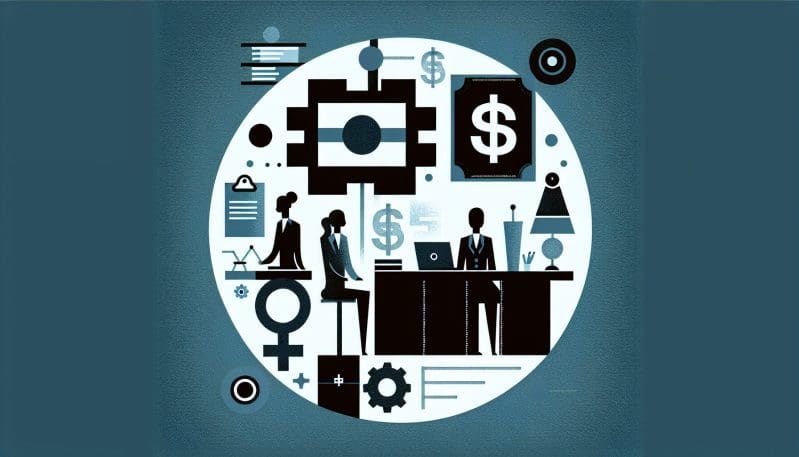The Gender Pay Gap: Unveiling Persistent Inequities in the Workplace
- Home
- The Gender Pay Gap: Unveiling Persistent Inequities in the Workplace

- Editors Desk
- January 19, 2024
- 0 Comments
The gender pay gap remains a pressing issue in today’s society, revealing persistent inequities within the workplace. Despite efforts made by various organizations and governments, the gap between men and women’s earnings continues to exist, raising questions about its root causes, consequences, and the systemic biases that perpetuate these inequities.
One of the key factors contributing to the gender pay gap is occupational segregation. Women often find themselves in lower-paying industries and occupations compared to their male counterparts. This segregation stems from various societal and cultural factors that influence career choices and opportunities. Women are often steered towards traditionally ‘female’ jobs, which are undervalued and underpaid. Moreover, they face challenges in accessing higher positions and career advancement opportunities.
Another significant factor is the undervaluation of women’s work. Occupations dominated by women tend to be undervalued and underpaid compared to male-dominated fields. This is known as the ‘pink-collar’ effect. Jobs that are associated with nurturing, caregiving, or administrative roles are often underpaid and less prestigious, despite the essential nature of the work performed. This undervaluation perpetuates the gender pay gap.
Systemic biases and discrimination also play a significant role in perpetuating inequities in the workplace. Women often face biases in hiring, promotion, and salary negotiations. Implicit biases, stereotypes, and cultural norms contribute to the undervaluation of women’s skills and experiences. Discrimination can be overt or subtle, but its impact on the gender pay gap is significant.
Pay transparency is crucial in narrowing the gender pay gap. When salaries are disclosed and accessible, it becomes easier to identify and address pay disparities. Transparency encourages accountability within organizations and helps ensure fair compensation practices. By promoting pay transparency, we can challenge the secrecy and biases that contribute to the persistence of the gender pay gap.
Affirmative action also plays a vital role in addressing the gender pay gap. By implementing policies that aim to correct historical imbalances and promote gender diversity, organizations can create a more inclusive and equitable workplace. Affirmative action programs can involve targeted recruitment efforts, mentoring programs, and policies that prioritize equal opportunities for all employees.
No Worker Left Behind is committed to dismantling the barriers that perpetuate the gender pay gap and advocating for equal pay and opportunities for all workers, regardless of gender. Our mission is to empower workers and create a more equitable world. To achieve this, we actively engage in research, advocacy, and policy development. We collaborate with organizations, governments, and stakeholders to promote gender-sensitive policies that address the root causes of gender pay inequities.
Through our initiatives, we strive to increase awareness, educate employers and employees about the importance of equal pay, and provide resources and support to individuals facing pay disparities. By fostering dialogue, promoting transparency, and advocating for change, No Worker Left Behind aims to create a fair and inclusive workplace for all.
Together, we can challenge the systemic biases, cultural norms, and discriminatory practices that perpetuate the gender pay gap. By working towards equal pay and opportunities, we can build a more just and inclusive future for workers across the globe.

Leave A Comment